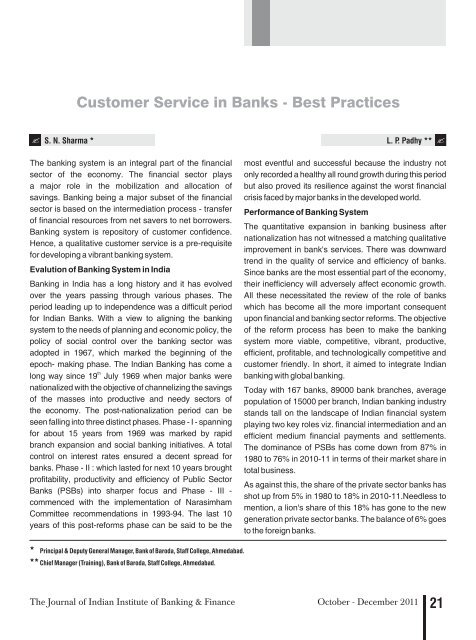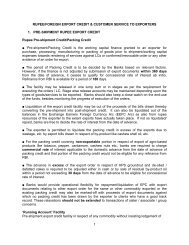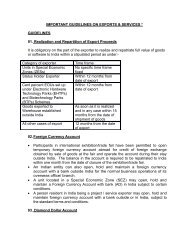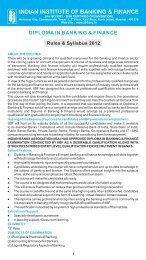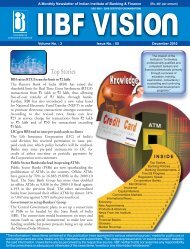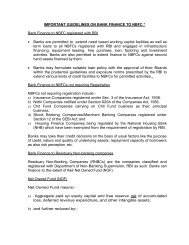You also want an ePaper? Increase the reach of your titles
YUMPU automatically turns print PDFs into web optimized ePapers that Google loves.
special featureCustomer Service in Banks - Best PracticesS. N. Sharma *L. P. Padhy **The banking system is an integral part of the financialsector of the economy. The financial sector playsa major role in the mobilization and allocation ofsavings. Banking being a major subset of the financialsector is based on the intermediation process - transferof financial resources from net savers to net borrowers.Banking system is repository of customer confidence.Hence, a qualitative customer service is a pre-requisitefor developing a vibrant banking system.Evalution of Banking System in IndiaBanking in India has a long history and it has evolvedover the years passing through various phases. Theperiod leading up to independence was a difficult periodfor Indian Banks. With a view to aligning the bankingsystem to the needs of planning and economic policy, thepolicy of social control over the banking sector wasadopted in 1967, which marked the beginning of theepoch- making phase. The Indian Banking has come athlong way since 19 July 1969 when major banks werenationalized with the objective of channelizing the savingsof the masses into productive and needy sectors ofthe economy. The post-nationalization period can beseen falling into three distinct phases. Phase - I - spanningfor about 15 years from 1969 was marked by rapidbranch expansion and social banking initiatives. A totalcontrol on interest rates ensured a decent spread forbanks. Phase - II : which lasted for next 10 years broughtprofitability, productivity and efficiency of Public SectorBanks (PSBs) into sharper focus and Phase - III -commenced with the implementation of NarasimhamCommittee recommendations in 1993-94. The last 10years of this post-reforms phase can be said to be themost eventful and successful because the industry notonly recorded a healthy all round growth during this periodbut also proved its resilience against the worst financialcrisis faced by major banks in the developed world.Performance of Banking SystemThe quantitative expansion in banking business afternationalization has not witnessed a matching qualitativeimprovement in bank's services. There was downwardtrend in the quality of service and efficiency of banks.Since banks are the most essential part of the economy,their inefficiency will adversely affect economic growth.All these necessitated the review of the role of bankswhich has become all the more important consequentupon financial and banking sector reforms. The objectiveof the reform process has been to make the bankingsystem more viable, competitive, vibrant, productive,efficient, profitable, and technologically competitive andcustomer friendly. In short, it aimed to integrate Indianbanking with global banking.Today with 167 banks, 89000 bank branches, averagepopulation of 15000 per branch, Indian banking industrystands tall on the landscape of Indian financial systemplaying two key roles viz. financial intermediation and anefficient medium financial payments and settlements.The dominance of PSBs has come down from 87% in1980 to 76% in 2010-11 in terms of their market share intotal business.As against this, the share of the private sector banks hasshot up from 5% in 1980 to 18% in 2010-11.Needless tomention, a lion's share of this 18% has gone to the newgeneration private sector banks. The balance of 6% goesto the foreign banks.* Principal & Deputy General Manager, Bank of Baroda, Staff College, Ahmedabad.** Chief Manager (Training), Bank of Baroda, Staff College, Ahmedabad.The Journal of Indian Institute of Banking & Finance October - December 2011 21


